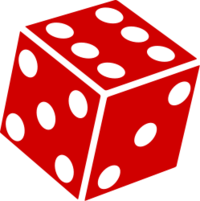Basics of Experimental Research
| Unit 4: Experimental Research Methods | |
|---|---|
| Experimental Research Methods | Unit 4 Overview | Unit 4 Outcomes | Unit 4 Resources | Basics of Experimental Research | Complex Research Designs | Single-Subject Research | Activities and Assessments Checklist |
Basics of Experimental Research
If somebody gave you $20 that absolutely had to be spent today, how would you choose to spend it? Would you spend it on an item you’ve been wanting to buy for weeks or would you donate the money to charity? Which option do you think would bring you the most happiness? If you’re like most people, you’d choose to spend the money on yourself. Our intuition is that we’d be happier if we spent the money on ourselves.
Knowing that our intuition can sometimes be wrong, Professor Elizabeth Dunn at the University of British Columbia set out to conduct an experiment on spending and happiness (Dunn, Aknin, & Norton, 2008). She gave participants in her experiment $20 and then told them they had to spend the money by the end of the day. Some of the participants were told they must spend the money on themselves and some were told they must spend the money on others (either charity or a gift for someone). At the end of the day, she measured participants’ levels of happiness using a self-report questionnaire.
In an experiment, researchers manipulate or cause changes in the independent variable and observe or measure the dependent variable. The independent variable is the one under the experimenter’s control. In the case of Dunn’s experiment, the independent variable was whether participants spent the money on themselves or on others. The dependent variable is the variable that is measured. The dependent variable--in this case, happiness--is not manipulated at all. Any observed changes or group differences in the dependent variable (happiness) can be attributed to the manipulation of the independent variable (whom money was spent on). What Dunn and her colleagues found was that after all the spending had been done, people who spent the money on others were happier than people who spent the money on themselves. In other words, spending on others causes us to be happier than spending on ourselves. Do you find this surprising?
But wait! Doesn’t happiness depend on a lot of different factors, for instance, a person’s upbringing or life circumstances? What if some people had happy childhoods and that’s why they’re happier? Or what if some people dropped their toast that morning and it fell jam side down and this ruined their whole day? You are correct that these factors, and many more, could easily affect a person’s level of happiness. So how can we conclude that spending on others causes happiness in the case of Dunn’s experiment? The most important thing about experiments is random assignment. Participants don’t get to pick which condition they are in. The experimenter assigns them to a particular condition based on the flip of a coin or the roll of a die or any other random method.
Why do researchers do this? There is the obvious reason: you can imagine which condition in Dunn’s study most people would choose to be in if given the choice. But another equally important reason is that random assignment makes it so that the groups on average are similar on all characteristics except what the experimenter manipulates. By randomly assigning people to conditions (self-spending versus other-spending), some people with happy childhoods will end up in each condition. Some people who dropped their toast that morning will end up in each condition. The distribution of all these factors will be even across the two groups, and this means that on average the two groups will be equivalent on all these factors. Random assignment is critical to experimentation because if the only way in which the two groups differ is on the independent variable, then we can make the inference that the independent variable is what causes any observable differences between the two groups.
Here’s another example of the importance of random assignment. Let’s say your class is going to form two basketball teams, and you get to be captain of one team. Everyone in the class will be divided among the two teams. If you get to pick the players for your team first, whom will you pick? You’ll probably pick the tallest members of the class or the ones who appear the most athletic. You probably won’t pick the short, uncoordinated people unless there’s nobody else. As a result, your team will be taller and more athletic than the other team. What if we want the teams to be even? How can we do this when we have people of varying height? All we have to do is randomly assign players to the two teams. Inevitably, some tall people and some short people will end up on your team. Some tall and some short will end up on the other team. The average height of the teams will be the same. That is the power of random assignment.
Other Considerations
In addition to using random assignment, you must also avoid introducing confounds to your experiment. Confounds are things that could undermine your ability to draw causal inferences. For example, if you want to test whether a new happy pill will make people happier, you could randomly assign participants to take the happy pill or not and compare these two groups on their self-reported happiness. However, if some people know they are getting the happy pill, they might develop participant expectations that may influence their self-reported happiness. This is known as a placebo effect. Just knowing that one is getting special treatment or something new is sometimes enough to actually cause changes in human behaviour. A related idea is demand characteristics. This occurs when participants try to behave in ways that they think the experimenter wants. Placebo effects and demand characteristics often occur unintentionally. Even experimenter expectations can influence the outcome of a study. For example, if the experimenter knows who took the happy pill and who did not, and the dependent variable is the experimenter’s observations of people’s happiness, then the experimenter might “see” improvements in one group that are not really there.

